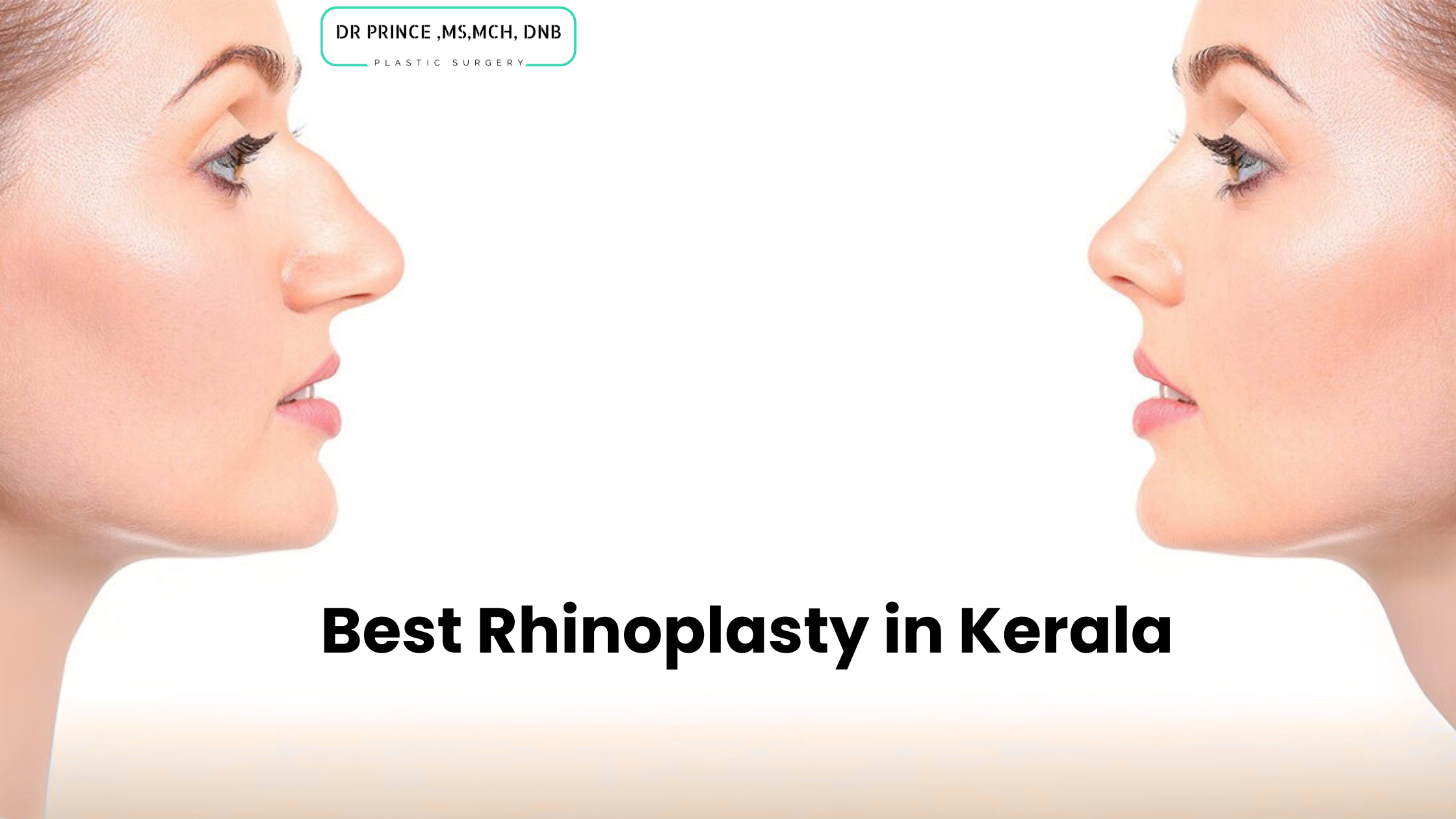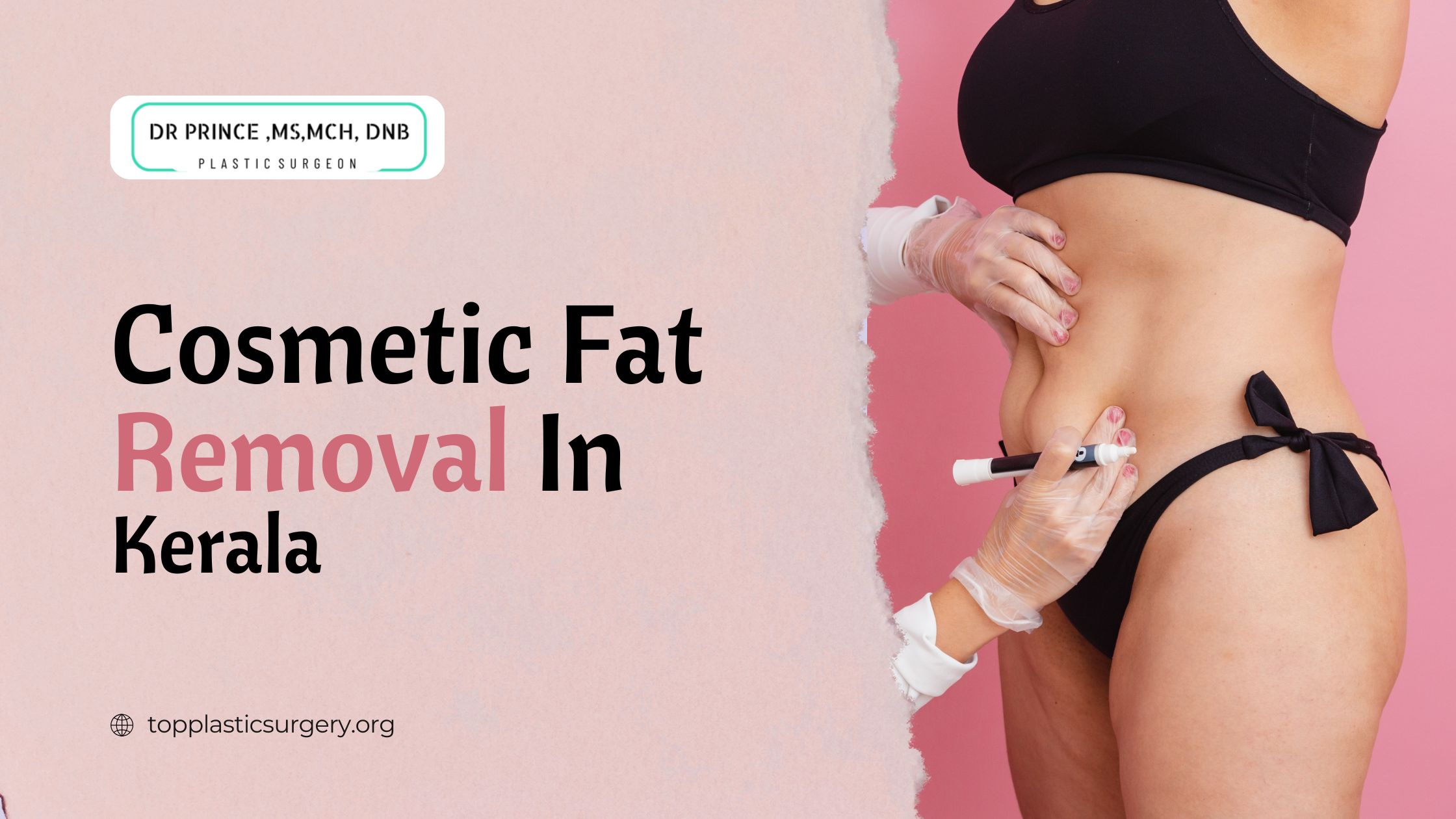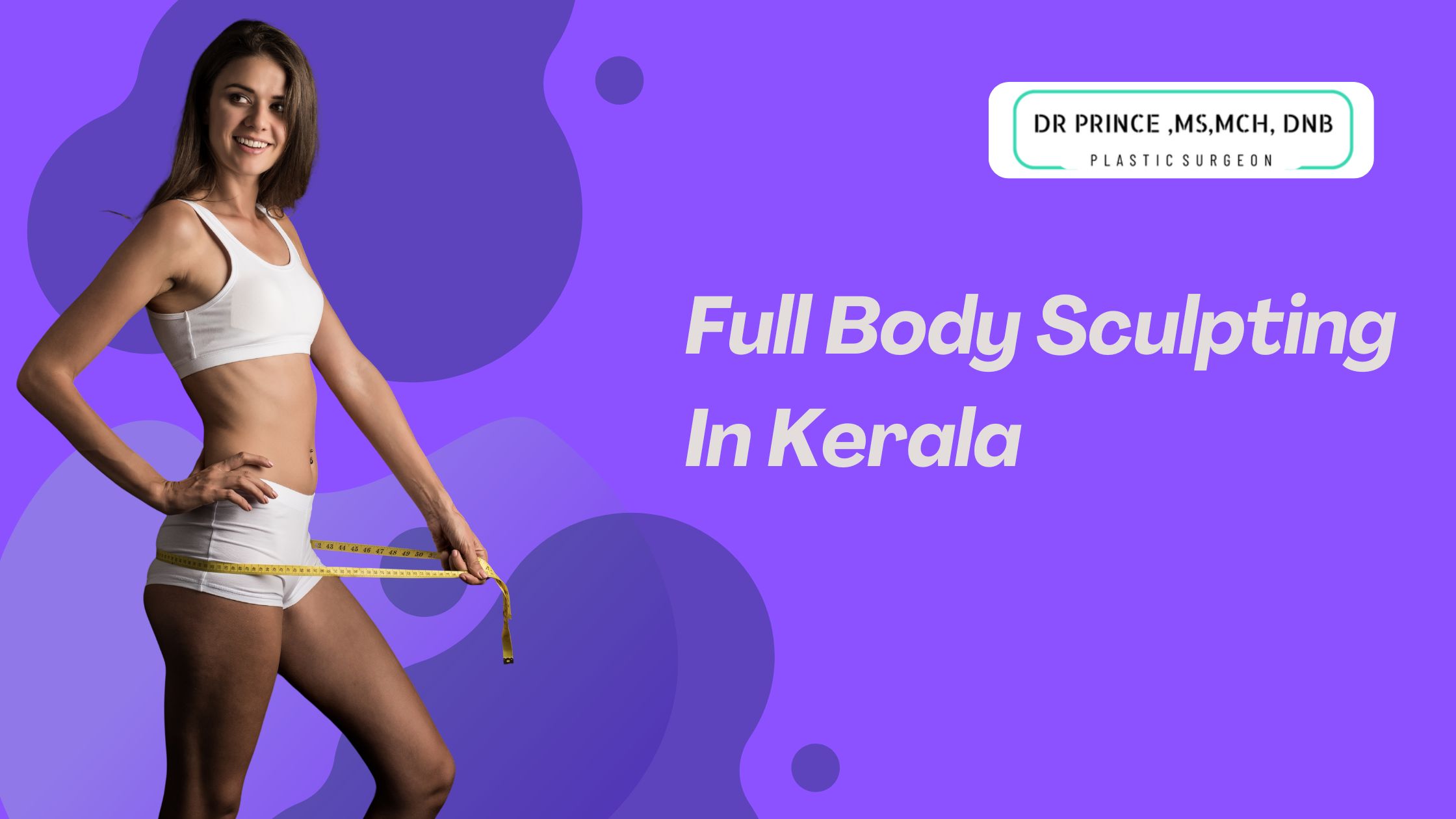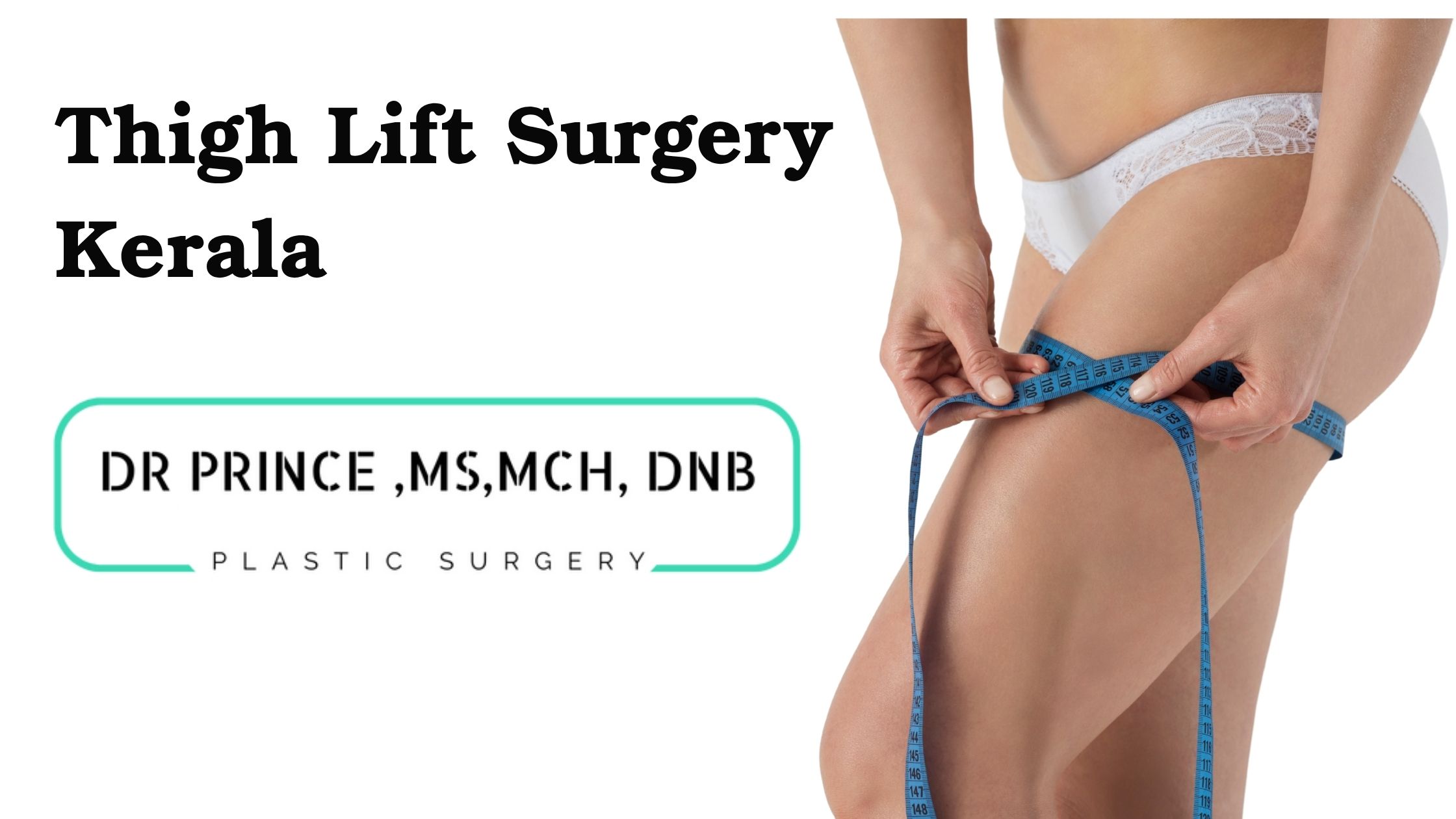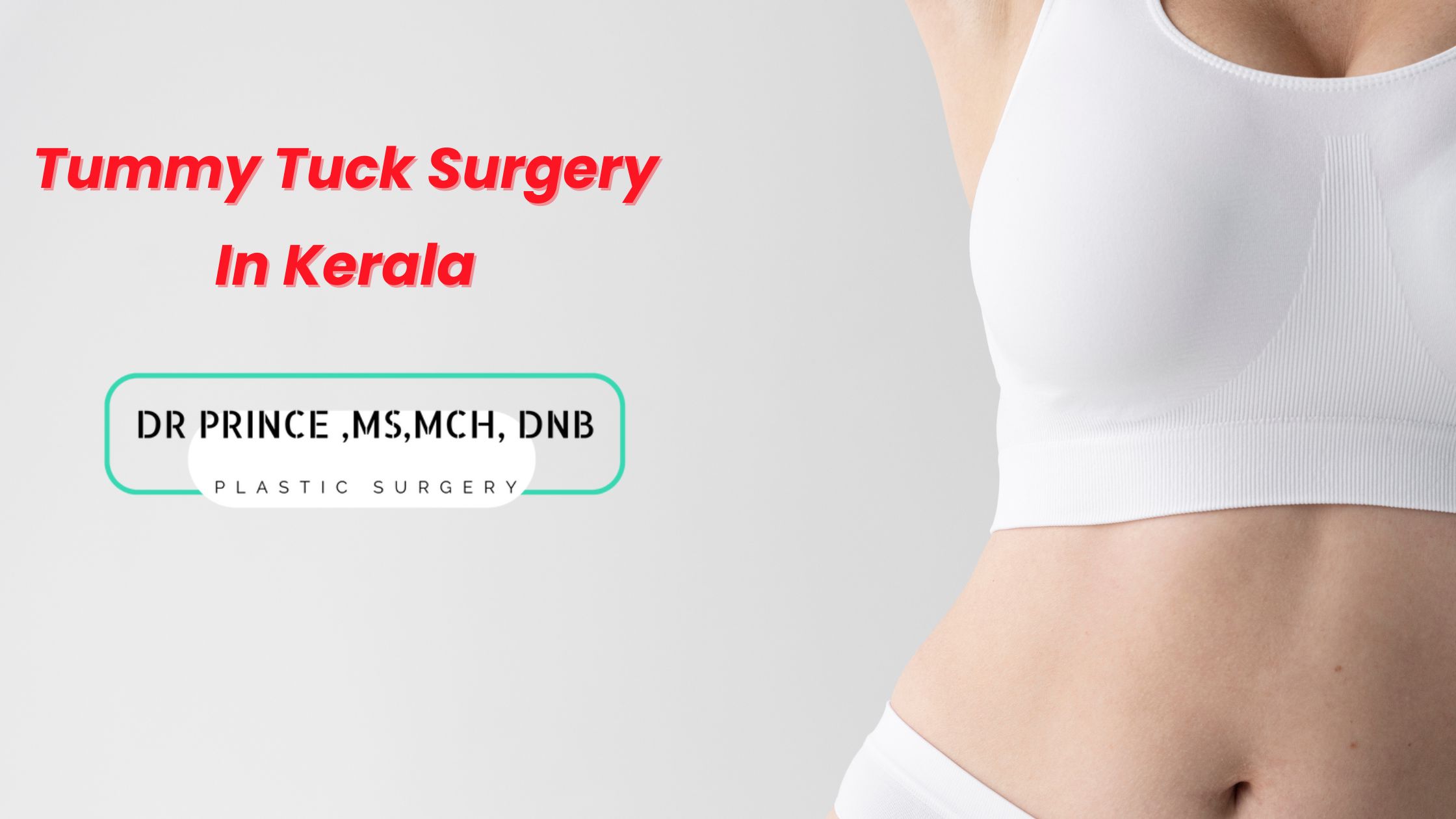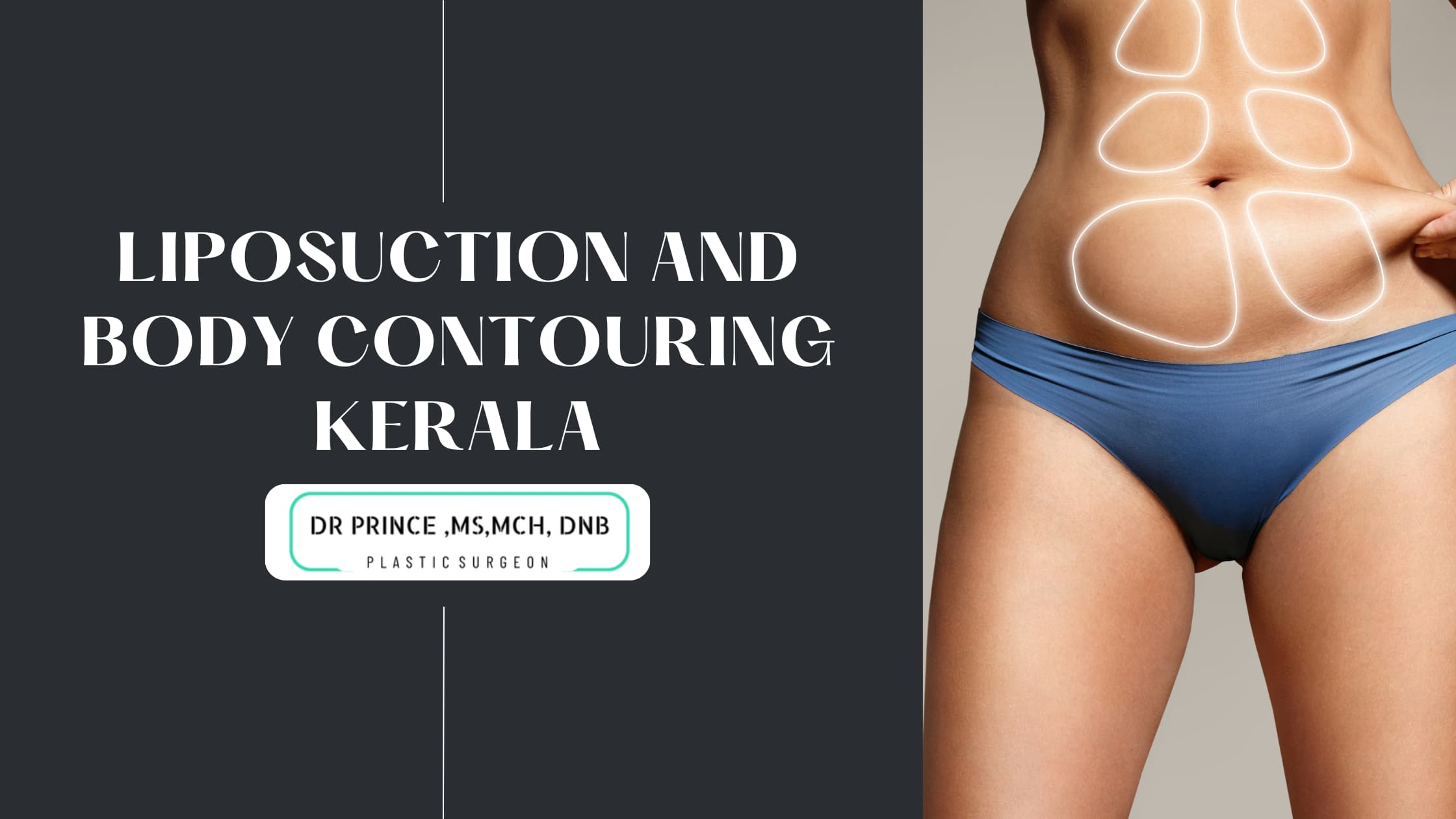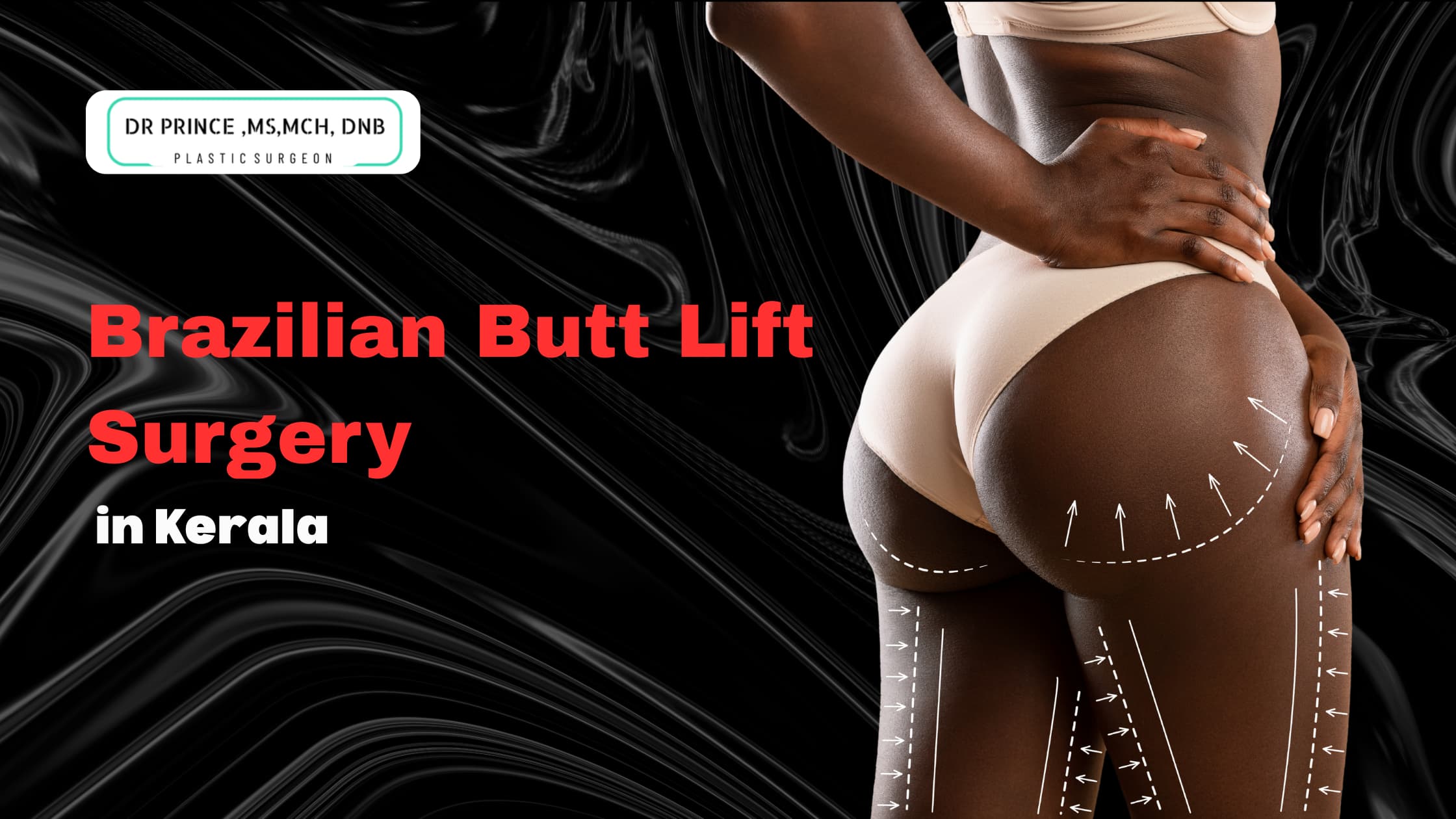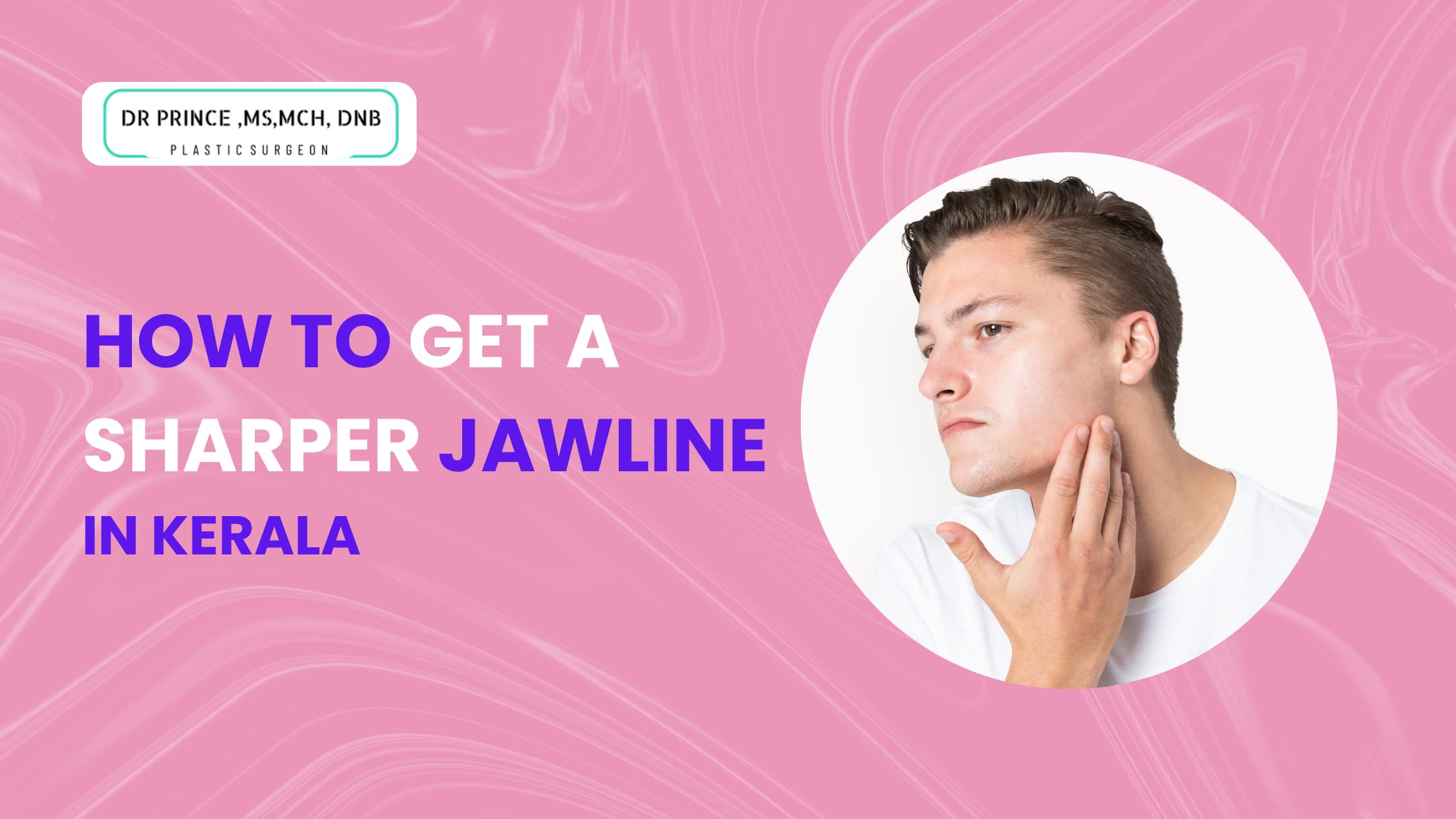Rhinoplasty, more commonly known as a “nose job,” is one of the most sought-after cosmetic and reconstructive surgical procedures worldwide. For many, the nose plays a central role in facial harmony, and its structure deeply influences both appearance and function. Patients seek rhinoplasty not only to enhance aesthetics but also to correct breathing difficulties, congenital deformities, or trauma-related issues. Among the many centers in India offering rhinoplasty, Kerala has emerged as a hub for advanced cosmetic surgery, owing to its skilled surgeons, modern hospitals, and holistic healing environment. Introduction to Rhinoplasty Rhinoplasty is a surgical procedure designed to reshape the nose. It can: Refine the size and shape of the nose Improve nasal symmetry Correct congenital anomalies Restore normal function after trauma Improve breathing by correcting structural issues such as a deviated septum Depending on the individual’s needs, rhinoplasty can be cosmetic, functional, or reconstructive in nature. For many patients, it combines both functional and cosmetic improvements, enhancing quality of life in multiple ways. Why Kerala for Rhinoplasty? Kerala, known as “God’s Own Country,” has gained global recognition not only for its scenic beauty but also for its excellence in healthcare. Here are some reasons why Kerala is becoming the preferred destination for patients seeking the Best Rhinoplasty in Kerala: Highly Qualified Surgeons: Kerala is home to some of the most skilled plastic and cosmetic surgeons who combine training, expertise, and precision in their approach. World-Class Hospitals: Advanced hospitals like Elite Hospital in Thrissur offer state-of-the-art infrastructure, modern equipment, and a patient-centered approach. Affordable Treatment: Compared to Western countries, Kerala provides world-class rhinoplasty procedures at a fraction of the cost. Medical Tourism Hub: Kerala has become a popular spot for medical tourism. Patients often combine treatment with rejuvenating Ayurvedic therapies and enjoy the serene backwaters. Holistic Care: Post-surgical recovery is supported by Kerala’s healthcare ecosystem, which emphasizes both physical and mental well-being. Dr. Prince – Leading the Way in Rhinoplasty At the forefront of rhinoplasty in Kerala is Dr. Prince, an accomplished plastic surgeon known for his expertise, compassionate care, and outstanding results. With years of experience in cosmetic and reconstructive surgery, Dr. Prince leads the Sushrutha Institute of Plastic Surgery at Elite Hospital, Thrissur. Patients from across India and abroad travel to consult Dr. Prince, who has consistently been associated with the Best Rhinoplasty in Kerala. His individualized approach ensures that every patient’s unique needs and expectations are addressed, whether cosmetic, functional, or both. Types of Rhinoplasty Dr. Prince offers comprehensive rhinoplasty services, including: Cosmetic Rhinoplasty: Focuses on refining nasal aesthetics to enhance facial harmony. Functional Rhinoplasty: Addresses structural problems that impair breathing. Reconstructive Rhinoplasty: Restores normal nasal appearance and function after trauma or previous surgeries. Revision Rhinoplasty: Corrects unsatisfactory results from earlier procedures. Septorhinoplasty: Combines aesthetic and functional corrections, including deviated septum repair. Each procedure is tailored after a detailed consultation, 3D analysis, and discussion of patient expectations. The Rhinoplasty Procedure The rhinoplasty journey with Dr. Prince typically follows these steps: Consultation & Planning: A detailed consultation involves physical examination, medical history review, and discussion of goals. Imaging & Simulation: Advanced tools are used to simulate possible outcomes, helping patients visualize results. Surgical Approach: Depending on the complexity, Dr. Prince may perform open or closed rhinoplasty. Open rhinoplasty offers greater precision for complex cases. Anesthesia: The procedure is performed under general or local anesthesia, ensuring patient comfort. Surgical Correction: Techniques involve reshaping bone, cartilage, and soft tissue to achieve the desired outcome. Recovery & Healing: Patients receive personalized post-operative care to ensure safe recovery and optimal results. Benefits of Rhinoplasty Improved nasal symmetry and facial aesthetics Correction of congenital or trauma-related deformities Enhanced breathing function Boosted confidence and self-esteem Long-lasting results When performed by a skilled surgeon like Dr. Prince, rhinoplasty provides both functional and psychological benefits, leading to improved quality of life. Why Choose Dr. Prince for Rhinoplasty? Patients describe their experience with Dr. Prince as transformative. Here’s why he is associated with the Best Rhinoplasty in Kerala: Expertise & Training: Years of experience in plastic and cosmetic surgery. Patient-Centered Care: Individualized treatment plans tailored to each patient’s unique anatomy and goals. Advanced Techniques: Utilizes the latest technology and surgical innovations for safe, precise results. Proven Results: Consistent record of excellent patient outcomes. Holistic Healing: Focuses on complete recovery, including emotional well-being. Recovery and Aftercare Recovery is a critical part of the rhinoplasty process. Dr. Prince emphasizes proper aftercare, which includes: Rest and elevation of the head to reduce swelling Avoiding strenuous activities during the healing phase Regular follow-ups to monitor progress Guidance on diet, medications, and lifestyle adjustments Most patients see significant improvement within 2–3 weeks, though complete healing may take several months. Dr. Prince and his team provide continuous support throughout recovery. Is rhinoplasty painful? Most patients describe the experience as more of a discomfort rather than pain. After surgery, you may feel pressure, stuffiness, or mild soreness around the nose, but this is well-controlled with prescribed pain medication. Most people are surprised at how tolerable recovery feels. Will there be scars? Closed rhinoplasty: All incisions are inside the nostrils, leaving no visible scars. Open rhinoplasty: A very fine incision is made at the base of the nose (columella). This heals well and becomes barely noticeable over time. Is rhinoplasty safe? Yes, rhinoplasty is safe when performed by a board-certified and experienced surgeon like Dr. Prince. Pre-surgical evaluation, modern techniques, and a well-equipped facility minimize risks significantly. Can rhinoplasty improve breathing issues? Yes. Functional rhinoplasty not only enhances appearance but can also correct internal problems such as a deviated septum, enlarged turbinates, or collapsed nasal valves, improving airflow and breathing quality. At what age can someone undergo rhinoplasty? Rhinoplasty is recommended only after facial growth is nearly complete: Females: usually after 16 years Males: usually after 18 yearsIn younger patients, exceptions may be made if severe breathing issues exist.
Fibroadenoma Treatment in India
Fibroadenomas are among the most common benign breast conditions faced by women, particularly in younger age groups. Although non-cancerous, these lumps often cause significant anxiety because of their similarity to breast cancer. Seeking accurate information and the right medical guidance is crucial for women who encounter this condition. What is a Fibroadenoma? A fibroadenoma is a benign (non-cancerous) breast lump made up of glandular and fibrous breast tissue. These lumps usually appear in women between the ages of 15 and 35, though they may occur at any age. Typical characteristics include: Firm, smooth, rubbery texture Easily movable under the skin Usually painless May increase or decrease in size over time While fibroadenomas are not cancerous, any new lump in the breast should always be evaluated by a healthcare provider to rule out other conditions. Causes and Risk Factors The exact cause of fibroadenomas is not fully known, but several contributing factors are recognized: Hormonal Influence: Estrogen is believed to play a role, as fibroadenomas often enlarge during pregnancy and shrink after menopause. Age: Most cases occur in younger women, especially under 35. Family History: Women with a family history of breast conditions may be more prone. Symptoms of Fibroadenoma Some women may not notice symptoms beyond feeling a lump. However, common signs include: Palpable, smooth, round, firm lump Lump that moves easily under the skin Sometimes tenderness, especially before menstruation If you notice any lump, nipple discharge, skin dimpling, or persistent pain, immediate medical consultation is necessary. Diagnosis of Fibroadenoma Correct diagnosis is crucial before considering Fibroadenoma Treatment in India. Standard diagnostic methods include: Clinical Examination – Initial evaluation by a breast surgeon or specialist. Imaging Tests: Ultrasound (especially in younger women with dense breasts) Mammogram (more common in women above 40) Biopsy: Fine Needle Aspiration Cytology (FNAC) Core Needle Biopsy These tests confirm whether the lump is a fibroadenoma or something requiring more urgent treatment. When Does a Fibroadenoma Need Treatment? Not all fibroadenomas require removal. Many can simply be monitored through regular check-ups and imaging. Treatment is considered if: The lump is large (greater than 2–3 cm) The lump continues to grow It causes pain or discomfort The patient is anxious about the presence of a lump There is uncertainty about diagnosis Fibroadenoma Treatment Options Fibroadenoma Treatment in India has evolved significantly with modern surgical and non-surgical approaches. 1. Observation (“Watchful Waiting”) Recommended for small, stable fibroadenomas. Periodic follow-up with ultrasound and physical examination. 2. Surgical Removal (Excision) Indicated for large, symptomatic, or uncertain lumps. Procedure: Local or general anesthesia, small incision, complete removal of the lump. Cosmetic outcome is prioritized, especially in young women. 3. Minimally Invasive Techniques India is advancing in scar-minimizing treatments such as: Vacuum-Assisted Biopsy Excision Cryoablation (freezing the lump) Radiofrequency Ablation These techniques reduce scarring and recovery time, while ensuring complete removal of the fibroadenoma. Advantages of Fibroadenoma Treatment in India India is a leading destination for patients seeking affordable, safe, and advanced fibroadenoma management. Benefits include: Expert Surgeons – Highly qualified specialists with global training. Cost-Effectiveness – Treatment costs are significantly lower compared to Western countries. Advanced Facilities – Availability of modern diagnostic and treatment methods. Patient-Centered Care – Emphasis on cosmetic outcomes, especially for young women. Medical Tourism – International patients combine treatment with holistic wellness in India. What is the main cause of fibroadenomas? Fibroadenomas are believed to be influenced by hormonal changes, particularly estrogen. They often grow during pregnancy or while taking hormone therapy and shrink after menopause. Do fibroadenomas always need to be removed? No. Many fibroadenomas are small, harmless, and stable in size. In such cases, doctors may recommend regular monitoring instead of surgery. Can fibroadenomas turn into cancer? Fibroadenomas are benign tumors and do not become cancerous. However, having them does not prevent a woman from developing breast cancer in the future, so regular check-ups are important. How is fibroadenoma diagnosed? Doctors usually use a combination of physical examination, ultrasound, mammogram (for older women), and biopsy (FNAC or core needle biopsy) to confirm the diagnosis. What is the recovery time after fibroadenoma removal? Most patients recover within a few days. Light activities can usually be resumed quickly, though strenuous exercise and heavy lifting should be avoided for 1–2 weeks.
Breast Reduction Doctor
For many women, overly large breasts can cause significant discomfort—physically, emotionally, and even socially. Chronic back and neck pain, posture problems, skin irritation, and difficulty finding well-fitting clothes are common struggles. Beyond the physical challenges, women often experience lowered self-esteem and limitations in sports or daily activities. This is where the expertise of a qualified breast reduction doctor becomes invaluable. Breast reduction surgery, also known as reduction mammoplasty, is not just a cosmetic procedure. It is a life-changing solution that can relieve pain, improve confidence, and restore balance to the body. Choosing the right doctor, however, is the most crucial step in ensuring safety, comfort, and long-term satisfaction with the results. At Sushrutha Institute of Plastic Surgery, Elite Hospital, Koorkenchery, Thrissur, Kerala, Dr. Prince and his dedicated team provide world-class care for women seeking breast reduction surgery. With years of specialized training, advanced surgical techniques, and a patient-first approach, Dr. Prince has helped countless women achieve healthier, happier lives. In this comprehensive guide, we’ll walk you through everything you need to know before choosing your breast reduction doctor—from understanding the procedure to knowing what to expect during recovery. By the end, you’ll feel more confident in making an informed decision about your health and body. What is Breast Reduction Surgery? Breast reduction surgery, or reduction mammoplasty, is a medical procedure designed to remove excess breast tissue, fat, and skin to create a breast size more proportional to the patient’s body. It is not simply about making the breasts smaller; it’s about achieving balance, comfort, and aesthetics. A skilled breast reduction doctor considers several factors before planning the surgery: the patient’s body type, chest width, existing breast tissue, and personal preferences regarding shape and size. The surgery typically involves three essential steps: Marking and Incision Placement – The doctor marks incision lines to ensure precision. Tissue and Fat Removal – Excess tissue is carefully removed to reduce size. Reshaping and Lifting – The breasts are lifted and reshaped for a natural, youthful appearance. In some cases, liposuction is also used, especially if the patient’s breasts are mostly composed of fatty tissue. The result is a lighter, firmer, and more proportionate breast size that improves posture, reduces pain, and enhances overall body confidence. Why Women (and Men) Seek Breast Reduction The reasons for seeking a breast reduction doctor extend far beyond aesthetics. While some patients desire smaller breasts for cosmetic reasons, the majority pursue surgery due to medical and lifestyle challenges. 1. Physical Health Issues Chronic back, neck, and shoulder pain. Posture problems caused by the weight of the breasts. Skin rashes or infections under the breast fold. Nerve pain or tingling due to compressed nerves. 2. Emotional and Social Wellbeing Self-consciousness or unwanted attention. Difficulty participating in sports or exercise. Trouble finding clothes that fit properly. Impact on confidence and relationships. 3. Male Breast Reduction (Gynecomastia) It’s not just women who seek breast reduction. Men with gynecomastia—a condition characterized by enlarged male breasts—also benefit greatly from consulting a specialized breast reduction doctor. In such cases, surgery helps restore a masculine chest contour and boosts self-esteem. Frequently Asked Questions (FAQ) About Breast Reduction Surgery 1. What exactly does a breast reduction doctor do? A breast reduction doctor specializes in reducing the size of overly large breasts by removing excess tissue, fat, and skin. The doctor not only reduces size but also reshapes and lifts the breasts for a more natural and youthful appearance. 2. Who is a good candidate for breast reduction surgery? Patients who experience back, neck, or shoulder pain, skin irritation under the breasts, difficulty exercising, or emotional distress due to large breasts are usually good candidates. Men with gynecomastia can also benefit from surgery. 3. Is breast reduction surgery only cosmetic? No. While it improves appearance, the main purpose is medical and functional. A breast reduction doctor helps patients overcome chronic pain, posture problems, and skin issues while also improving confidence. 4. Will my insurance cover breast reduction surgery? In many cases, breast reduction is considered medically necessary if symptoms such as pain, rashes, or restricted mobility are present. Some insurance companies provide coverage, but it depends on the policy and documentation. 5. How long does the surgery take? On average, breast reduction surgery takes 2 to 4 hours, depending on the complexity and the amount of tissue removed. Your breast reduction doctor will explain the expected duration during consultation.
Best Liposuction in Kerala
In recent years, cosmetic surgery has gained widespread popularity across India, particularly in Kerala, where people increasingly seek safe and advanced options to enhance their appearance. Among all cosmetic procedures, liposuction stands out as one of the most transformative. If you are considering body contouring, fat removal, or reshaping, this comprehensive guide will help you understand everything you need to know about choosing the Best Liposuction in Kerala. Introduction: Why Liposuction? Liposuction is not just about weight loss—it is about sculpting the body and creating better contours in areas resistant to diet and exercise. Despite leading a healthy lifestyle, some people may struggle with stubborn fat pockets around the abdomen, thighs, arms, or chin. Liposuction helps address these issues by removing excess fat safely and effectively. But here’s the important part: the results of liposuction depend largely on the expertise of the surgeon and the quality of the medical facility. That’s why patients searching for the Best Liposuction in Kerala often look for a highly skilled plastic surgeon backed by advanced hospital infrastructure. Kerala as a Hub for Cosmetic Surgery Kerala has emerged as one of the most sought-after destinations for medical tourism in India. Known for its advanced healthcare system, well-trained doctors, and serene environment, Kerala attracts both Indian and international patients. Thrissur, in particular, has become a growing hub for cosmetic surgery, thanks to specialized centers such as the Sushrutha Institute of Plastic Surgery at Elite Hospital, Koorkenchery. Patients looking for the Best Liposuction in Kerala often travel from nearby states and even abroad, not only for quality results but also for the compassionate and personalized care offered here. What Makes Liposuction Effective? The success of liposuction is determined by several factors: The Surgeon’s Experience – Liposuction requires precision, aesthetic sense, and medical expertise. A skilled surgeon like Dr. Prince ensures safe fat removal while maintaining natural body proportions. Advanced Technology – Modern techniques such as power-assisted liposuction (PAL), laser-assisted liposuction, and ultrasound-assisted liposuction provide better contouring with faster recovery. Hospital Infrastructure – A facility like Elite Hospital in Thrissur offers world-class operation theaters, safety protocols, and a dedicated post-operative care team. Personalized Treatment Plans – Each body is unique. The Best Liposuction in Kerala focuses on customizing the procedure for every patient’s goals and body type. Who Can Benefit from Liposuction? Many people mistakenly believe that liposuction is a weight-loss procedure. In reality, it is most effective for individuals who are near their ideal weight but have localized fat deposits. Common treatment areas include: Abdomen (tummy) Thighs (inner and outer) Hips and flanks (love handles) Arms Back (bra bulge area) Chin and neck Chest (especially in gynecomastia cases for men) Patients seeking the Best Liposuction in Kerala should undergo a consultation to determine their suitability. Ideal candidates are non-smokers, in good health, and committed to maintaining results with a healthy lifestyle. Different Techniques of Liposuction There are multiple approaches to liposuction, each with unique benefits. At the Sushrutha Institute of Plastic Surgery, patients can access the most modern techniques under expert guidance: Traditional Liposuction – Uses cannulas and suction to remove fat. Still effective for larger fat removal. Tumescent Liposuction – Involves injecting fluid to numb and loosen fat before removal. This reduces bleeding and pain. Power-Assisted Liposuction (PAL) – Uses vibrating cannulas for more precise fat removal with less trauma. Laser-Assisted Liposuction (SmartLipo) – Uses laser energy to liquefy fat and stimulate skin tightening. Ultrasound-Assisted Liposuction (VASER) – Employs ultrasound waves to break down fat for smoother contouring. Choosing the Best Liposuction in Kerala means gaining access to these technologies under the safe supervision of an expert surgeon. Why Choose Dr. Prince and Sushrutha Institute of Plastic Surgery? When patients search for the Best Liposuction in Kerala, they often end up at the doorstep of Dr. Prince at the Sushrutha Institute of Plastic Surgery, located at Elite Hospital, Koorkenchery, Thrissur. Here’s why: Expertise: Dr. Prince is a well-trained plastic surgeon with years of experience in cosmetic and reconstructive procedures. State-of-the-Art Facility: Elite Hospital is equipped with advanced operation theaters, modern anesthesia care, and strict safety standards. Personalized Care: Every patient receives a detailed consultation, where realistic outcomes and tailored treatment plans are discussed. Holistic Recovery: Post-surgery care includes follow-up consultations, lifestyle guidance, and physiotherapy if required. Accessibility: Located in Thrissur, it is easily reachable for patients across Kerala and South India. For consultation and appointments, patients can directly contact:📞 (+91) 6238944054📧 contactplastiksurgery@gmail.com Step-by-Step Journey of Liposuction 1. Initial Consultation Patients meet Dr. Prince to discuss goals, medical history, and expectations. This stage determines whether liposuction is the right choice. 2. Pre-Operative Preparation Routine blood tests, imaging, and fitness evaluation are done to ensure safety. Patients are advised to stop smoking and avoid certain medications. 3. The Procedure Depending on the technique, liposuction is performed under local or general anesthesia. Small incisions are made to insert cannulas for fat removal. 4. Post-Operative Recovery Patients may experience swelling, bruising, or mild discomfort for a few weeks. Compression garments help reduce swelling and improve contour. 5. Final Results It may take 3–6 months for the body to fully settle and showcase the final contour. With proper care, the results of the Best Liposuction in Kerala are long-lasting. Who is the right candidate for the Best Liposuction in Kerala? Ideal candidates are individuals close to their ideal weight but struggling with stubborn fat pockets that don’t respond to diet or exercise. They should be in good health, non-smokers, and have realistic expectations. How much fat can be removed in one session? On average, 4–5 liters of fat can be removed safely during liposuction. The exact amount depends on the patient’s health, body type, and surgical plan discussed with Dr. Prince. Will liposuction results be permanent? Yes, the fat cells removed are permanently gone. However, patients must maintain a healthy lifestyle with proper diet and exercise to prevent new fat from developing. How long does it take to recover from the Best Liposuction in Kerala? Most patients can resume light
Tummy Tuck Recovery
A tummy tuck, or abdominoplasty, is a transformative surgical procedure that removes excess skin, tightens abdominal muscles, and reshapes the midsection. While the surgery itself is critical, your Tummy Tuck Recovery journey is equally important. The way you heal after the operation will influence your final results, your comfort, and your long-term satisfaction. In this comprehensive guide, Dr. Prince, consultant plastic surgeon at the Sushrutha Institute of Plastic Surgery, shares an in-depth understanding of the recovery process, best practices, timelines, and what to expect each step of the way. Why Understanding Tummy Tuck Recovery Matters Many patients spend weeks or even months focusing on the “before” stage — researching the tummy tuck procedure, meeting with their plastic surgeon, and preparing for surgery. While that preparation is vital, the tummy tuck recovery phase is equally, if not more, important. This is the time when your body undertakes the essential work of healing, scar maturation, and refining your abdominal contour. A well-managed tummy tuck recovery can significantly influence your final results. If recovery is rushed, neglected, or misunderstood, patients face an increased risk of delayed healing, wound complications, or results that do not meet expectations. Dr. Prince stresses that tummy tuck recovery is not a passive process. It requires active participation, careful adherence to post-operative instructions, and a commitment to allowing your body the time it needs to fully heal. By understanding what to expect and following your surgeon’s guidance during tummy tuck recovery, patients can help ensure smoother healing, reduce the risk of complications, and maximize the aesthetic outcome they worked so hard to achieve. What Exactly is a Tummy Tuck? Many patients spend weeks or even months focusing on the “before” stage — researching the tummy tuck procedure, meeting with their plastic surgeon, and preparing for surgery. While that preparation is vital, the tummy tuck recovery phase is equally, if not more, important. This is the time when your body undertakes the essential work of healing, scar maturation, and refining your abdominal contour. A well-managed tummy tuck recovery can significantly influence your final results. If recovery is rushed, neglected, or misunderstood, patients face an increased risk of delayed healing, wound complications, or results that do not meet expectations. Dr. Prince stresses that tummy tuck recovery is not a passive process. It requires active participation, careful adherence to post-operative instructions, and a commitment to allowing your body the time it needs to fully heal. By understanding what to expect and following your surgeon’s guidance during tummy tuck recovery, patients can help ensure smoother healing, reduce the risk of complications, and maximize the aesthetic outcome they worked so hard to achieve. A tummy tuck, or abdominoplasty, is a surgical procedure that removes excess skin and fat from the abdomen while also tightening weakened or separated abdominal muscles. This procedure can dramatically improve abdominal contour and create a flatter, firmer appearance. It’s especially popular among individuals who have: Lost a significant amount of weight and are left with loose, hanging skin Experienced abdominal changes and stretched skin after pregnancy Noticed skin laxity and weakened muscles due to aging While the surgical procedure itself is highly transformative, the tummy tuck recovery phase plays an equally critical role in achieving the final result. You can think of the operation as setting the stage — but tummy tuck recovery is where the performance truly unfolds. It’s during this time that swelling decreases, scars begin to mature, and your body adapts to its new shape. A smooth tummy tuck recovery requires patience, proper aftercare, and close communication with your surgeon to ensure optimal healing and long-lasting results. Why Recovery Matters Just as Much as Surgery It’s common for patients to underestimate the recovery process. Many assume that once the stitches are in place, the rest is simply a matter of waiting. In reality, tummy tuck recovery is far more involved and can have a direct impact on your final results. The way you care for yourself in the weeks after surgery can significantly shape your outcome. Ignoring medical advice during tummy tuck recovery can slow healing, increase the risk of complications, and compromise results. Your daily habits — from nutrition and hydration to gentle movement and rest — influence how efficiently your body heals. At the Sushrutha Institute of Plastic Surgery, Dr. Prince and his team make sure every patient understands that tummy tuck recovery is an active process, not a passive one. It requires attention, patience, and a willingness to follow individualized post-operative instructions. When done right, tummy tuck recovery is where the groundwork laid in the operating room transforms into the long-lasting, beautiful results you’ve envisioned. Potential Side Effects and How to Manage Them Every surgery comes with some aftereffects — most are temporary and part of your body’s normal healing process. Knowing what’s expected and what’s a warning sign can help you feel more confident during your Tummy Tuck Recovery. Common, Temporary Side Effects These are usually mild and improve with time: Swelling and bruising – This is your body’s natural way of protecting the surgical area. Wearing your compression garment and following your surgeon’s movement guidelines can help reduce swelling faster. Numbness around the incision site – Temporary nerve disturbance is common. Sensation often returns gradually over a few months. Tightness in the abdomen when standing upright – This is due to muscle tightening and will ease as healing progresses. Walking slightly bent at the waist during the first week can reduce discomfort. Warning Signs to Watch For While rare, certain symptoms need immediate medical attention: Increasing redness, warmth, or pus at the incision site – Could indicate infection. Sudden swelling in one leg – May be a sign of a blood clot. Difficulty breathing – Could suggest a more serious complication. If you notice any of these warning signs during Tummy Tuck Recovery, contact your surgeon immediately. Dr. Prince and his team at Sushrutha Institute of Plastic Surgery are available to help address concerns promptly. Why Choose Dr. Prince for Your
The Art and Science of the Rhinoplasty Procedure
Plastic surgery stands at the intersection of art and science—where precision meets transformation and aesthetic vision aligns with medical expertise. Among the most refined and impactful procedures in this field is the Rhinoplasty procedure, commonly referred to as a “nose job.” This surgical technique is not merely about altering the shape of the nose but about enhancing facial harmony, improving function, and restoring confidence. The Rhinoplasty procedure has evolved significantly over the decades, combining advanced surgical methods with an individualized approach tailored to each patient’s unique anatomy and aesthetic goals. Whether addressing cosmetic concerns, correcting a deviated septum, or repairing trauma-related deformities, rhinoplasty offers a versatile solution that requires both technical skill and artistic sensibility. In this comprehensive blog, we delve deeply into every facet of the Rhinoplasty procedure—its historical origins, modern surgical techniques, the full spectrum of patient experiences, recovery protocols, and outcomes. Designed to educate, inform, and empower, this guide aims to support patients who are considering this transformative journey toward improved nasal aesthetics and function. What Is the Rhinoplasty Procedure? The Rhinoplasty procedure—commonly known as a “nose job”—is a specialized form of facial plastic surgery designed to reshape or reconstruct the nose. This versatile surgical technique serves both cosmetic and functional purposes, making it one of the most frequently performed and impactful procedures in aesthetic and reconstructive surgery. From a cosmetic perspective, the rhinoplasty procedure can refine the nasal bridge, reshape the tip, narrow the nostrils, or adjust the overall size and symmetry of the nose to create a more proportionate and aesthetically pleasing facial profile. Functionally, rhinoplasty can correct structural abnormalities—such as a deviated septum or nasal valve collapse—that impair breathing and airflow. What distinguishes the rhinoplasty procedure is its delicate balance of surgical precision and artistic sensibility. Each nose is unique, and the procedure must be tailored meticulously to complement the individual’s facial anatomy, ethnicity, and personal goals. This custom approach ensures that the results are not only beautiful but also natural-looking and sustainable over time. Whether performed for aesthetic enhancement, functional correction, or reconstructive needs, the rhinoplasty procedure remains a cornerstone of transformative plastic surgery—capable of significantly improving both appearance and quality of life. Why People Choose the Rhinoplasty Procedure Patients choose the Rhinoplasty procedure for a range of personal, medical, and aesthetic reasons. At its core, rhinoplasty is not just about changing the nose—it’s about enhancing function, restoring confidence, and achieving facial harmony. Common motivations include: Cosmetic Refinement: Adjusting the nasal tip, bridge, nostrils, or overall profile to achieve better symmetry or proportion. Functional Correction: Improving airflow by correcting structural issues like a deviated septum or nasal valve collapse. Trauma Repair: Reconstructing the nose after injury or fractures to restore both shape and function. Emotional and Psychological Well-Being: A more balanced facial appearance often contributes to increased self-confidence and improved quality of life. Each Rhinoplasty procedure performed by Dr. Prince is individually customized, ensuring that patient goals are clearly understood and aligned with the most suitable surgical approach. Who Benefits? Determining candidacy is essential to ensure safe and successful outcomes from a Rhinoplasty procedure. Ideal candidates typically meet the following criteria: Are in good general health with no untreated medical conditions that could impair healing. Have realistic expectations about the results and understand the limitations of surgery. Present with concerns such as congenital nasal shape issues, nasal obstruction, or previous trauma. Have completed facial growth, usually in late teens or early adulthood, to allow for stable, long-term results. Before proceeding, Dr. Prince conducts a comprehensive consultation evaluating nasal anatomy, skin thickness, airway function, and aesthetic goals to ensure the Rhinoplasty procedure is both safe and effective. Types of Rhinoplasty Procedure The Rhinoplasty procedure can be approached in several distinct ways, depending on the complexity of the case, patient anatomy, aesthetic goals, and the surgeon’s assessment. The two primary techniques are Open Rhinoplasty and Closed Rhinoplasty, each with its own advantages, limitations, and indications. Understanding the differences helps patients make informed decisions during their consultation. Open Rhinoplasty Procedure The Open Rhinoplasty procedure involves making a small external incision across the columella—the narrow strip of skin that separates the nostrils. This allows the nasal skin to be gently lifted, fully exposing the underlying bone and cartilage structures. Key advantages of the Open approach: Superior visibility and precision: The open technique offers complete access to the nasal framework, which is especially beneficial for: Correcting complex deformities Performing revision rhinoplasty Reshaping the nasal tip or bridge with a high level of control Ideal for structural grafting: Cartilage grafts—harvested from the septum, ear, or rib—can be precisely placed under direct visualization. More predictable outcomes in intricate cases involving asymmetry, post-traumatic changes, or severe deviation. Considerations: May involve a slightly longer surgical time. Leaves a small external scar on the columella; however, it typically heals well and becomes virtually unnoticeable over time. Recovery may involve slightly more swelling compared to the closed technique. The Open Rhinoplasty procedure is often the preferred choice for patients requiring detailed structural modifications or undergoing revision rhinoplasty after a previous surgery. Closed Rhinoplasty Procedure The Closed Rhinoplasty procedure—also known as endonasal rhinoplasty—places all incisions within the nostrils, with no visible external scars. Through these internal incisions, Dr. Prince reshapes the bone and cartilage without lifting the nasal skin. Key advantages of the Closed approach: No visible scarring: All surgical work is performed internally. Reduced operative time and typically faster recovery due to less tissue disruption. Preservation of nasal support structures, which can be beneficial for patients seeking modest cosmetic improvements. Ideal candidates for Closed Rhinoplasty: Patients requiring minor to moderate refinements, such as: Straightening a slight dorsal hump Subtle tip rotation or definition Narrowing of the nasal bones Individuals undergoing primary (first-time) rhinoplasty without significant functional or structural concerns Considerations: Limited visibility for the surgeon, which may not be suitable for complex nasal anatomy or significant asymmetry. Less flexibility in grafting or revision cases compared to the open approach. Customizing the Technique for Each Patient At the Sushrutha Institute of Plastic Surgery, Dr.
Blepharoplasty Before and After
Why “Blepharoplasty Before and After” Matters Your eyes are one of the most expressive and noticeable features of your face. Unfortunately, aging, genetics, and lifestyle factors can lead to sagging eyelids, under-eye bags, and a generally tired appearance. That’s where blepharoplasty, or eyelid surgery, comes in—a popular cosmetic procedure designed to rejuvenate the eye area and restore a more youthful, refreshed look. Understanding what happens before and after blepharoplasty is essential for anyone considering this transformative surgery. From pre-operative preparations to post-surgical recovery and final results, knowing what to expect can ease anxiety and help set realistic expectations. In this blog, we delve into everything you need to know about blepharoplasty—before and after photos, healing stages, and patient experiences—with expert insights from Dr. Prince, one of Kerala’s top plastic surgeons. Whether you’re exploring upper eyelid surgery for vision improvement or cosmetic lower eyelid surgery to reduce puffiness, this guide will help you make an informed decision. What Is Blepharoplasty? Blepharoplasty, commonly known as eyelid surgery, is a specialized cosmetic and functional procedure designed to enhance the appearance of the eyelids and, in some cases, improve vision. This surgical technique targets issues related to aging, genetics, or environmental factors that affect the delicate skin around the eyes. Blepharoplasty can address a range of concerns, including: Sagging or drooping upper eyelids Under-eye bags or puffiness Wrinkled, crepey, or excess eyelid skin Obstructed peripheral vision due to heavy eyelids The blepharoplasty before and after results are often striking—not just in terms of aesthetic improvement, but also in restoring functional benefits. Many patients report enhanced field of vision, reduced eye fatigue, and a noticeable boost in self-confidence. Whether performed on the upper eyelids, lower eyelids, or both, blepharoplasty is a safe and effective solution for achieving a brighter, more alert, and youthful look. With expertise from seasoned specialists like Dr. Prince, a leading plastic surgeon in Kerala, patients can expect tailored care, natural-looking results, and a comprehensive understanding of the entire transformation journey. Why Patients Search for “Blepharoplasty Before and After” When it comes to making decisions about cosmetic surgery, visual evidence is key. Most prospective patients turn to the internet searching for “blepharoplasty before and after” photos because they want more than just medical explanations—they want reassurance, transparency, and a glimpse of what’s truly possible. These image galleries play a crucial role in: Demonstrating realistic outcomes Highlighting subtle yet transformative results Helping patients visualize changes on similar facial types Building trust in the surgeon’s expertise Unlike dramatic makeovers, eyelid surgery often delivers refined, natural results—the kind that make people say, “You look well-rested,” rather than, “Did you have surgery?” That’s the power of a well-performed blepharoplasty. Dr. Prince, one of Kerala’s most trusted plastic surgeons, offers an extensive portfolio of before and after blepharoplasty results, showcasing a wide range of cases—from mild eyelid hooding to advanced puffiness correction. These real patient results help individuals set clear expectations, make informed choices, and feel confident moving forward with their treatment. By reviewing these images, you’ll understand why so many people say that blepharoplasty changed not only how they look—but how they feel. Top Benefits of Eyelid Surgery Blepharoplasty offers more than just cosmetic improvement—it’s a procedure with both aesthetic and functional rewards. If you’re exploring eyelid surgery and reviewing blepharoplasty before and after photos, you’ll quickly notice the dramatic yet natural improvements it can provide. Here are the top five benefits that make blepharoplasty one of the most sought-after facial procedures: 1. Rejuvenated Appearance Blepharoplasty restores a more youthful, rested look by removing sagging skin and puffiness around the eyes. Patients often say they look less tired and more vibrant—sometimes even years younger. 2. Improved Vision In cases where drooping upper eyelids obstruct peripheral vision, eyelid surgery can significantly improve sightlines. Many patients report better visual clarity and reduced eye strain after surgery. 3. Long-Lasting Results One of the greatest advantages of blepharoplasty is its longevity. Most patients enjoy the benefits for 10 to 15 years, making it a worthwhile long-term investment in both appearance and quality of life. 4. Minimally Invasive Procedure Modern blepharoplasty techniques involve small incisions, minimal scarring, and relatively quick recovery times. Many people return to normal activities within 7–10 days post-surgery. 5. Boosted Confidence Looking better often leads to feeling better. Blepharoplasty can improve self-image and boost confidence in both social and professional settings. These benefits become even more compelling when viewed through blepharoplasty before and after photos, which clearly demonstrate how a small, targeted procedure can rejuvenate the entire upper face. What Happens During the Procedure? Blepharoplasty is a highly customized procedure, and Dr. Prince—a leading plastic surgeon in Kerala—tailors each surgery to the patient’s unique anatomy and goals. Depending on whether the concern lies in the upper eyelids, lower eyelids, or both, he performs one or a combination of the following techniques: Upper Eyelid Blepharoplasty This procedure focuses on correcting droopy or hooded upper eyelids that may cause a tired appearance or impair vision. It involves: Removing excess skin, muscle, and fat Making incisions within the natural upper eyelid crease for minimal visible scarring Lifting and contouring the eyelid for a refreshed look Lower Eyelid Blepharoplasty This technique addresses puffiness, under-eye bags, and loose skin beneath the eyes. It typically involves: Removing or redistributing fat deposits Tightening loose or wrinkled skin Placing incisions either inside the lower eyelid (transconjunctival) or just below the lash line (subciliary), depending on the case Each surgical plan is developed with precision, guided by a detailed blepharoplasty before and after analysis. By evaluating similar patient profiles and expected outcomes, Dr. Prince ensures that the most appropriate and effective technique is used to deliver natural-looking, symmetrical results. Common reasons patients consider blepharoplasty People typically seek eyelid surgery to correct sagging upper lids, puffy under-eye bags, or impaired vision. Dr. Prince often sees patients who want to look more refreshed and alert without changing their natural appearance. Timeline for visible results after eyelid surgery Most patients begin to notice improvements within 7–10 days, but

